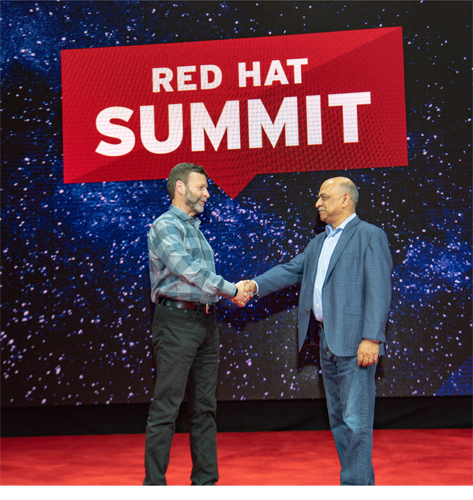Featured Stories
Refining the Expanding Role of Hybrid Cloud
 |
By Arvind Krishna
May 8, 2018
Successful enterprises innovate. They listen, learn and experiment, and after doing so, they either lead or adapt. Or, for those who do not, they risk failure.
Possibly nowhere is this more evident than in cloud computing, an environment driven by user demand and innovation. Today the innovation focuses squarely on accelerating the creation and deployment of integrated, hybrid clouds. Whether on public, private or on-premises systems, more companies are demanding interoperability to enable scalability, agility, choice, performance – and no vendor lock-in. Simultaneously, they want to integrate all of it with their existing massive technology investments.
One of the fundamental building blocks of this burgeoning integrated, hybrid cloud environment is the software container – a package of software that includes everything needed to run it. Through containers, which are lightweight, easily portable and OS-independent, organizations can create and manage applications that can run across clouds with incredible speed. This leads to a truly flexible environment that is optimized for automation, security, and easy scalability. IBM recognized the value of containers several years ago, and has been aggressively building out easy-to-use cloud services and capabilities with Docker, Kubernetes, and our own technologies.
In addition, IBM has moved to containerize all of its portfolio middleware, including everything from WebSphere to Db2 to API Connect to Netcool.
This strategy fits with our view that the core of the cloud is flexibility. There is no “one size fits all.” This idea is what led to the creation of the IBM Cloud Private platform, which delivers containers and services that help accelerate clients’ journey to the cloud.
And that’s why today IBM and Red Hat are coming together to enable the easy integration of IBM’s extensive middleware and data management with Red Hat’s well-entrenched Red Hat OpenShift open source container application platform. This is a major extension of our long-standing relationship with Red Hat and provides enterprises access to a complete and integrated hybrid cloud environment – from the operating system, to open source components, to Red Hat Enterprise Linux containers, to IBM middleware that has been re-engineered for the cloud era.
Both of our companies believe in a hybrid cloud future and, with this partnership, we are ensuring seamless connectivity between private and public clouds so that clients get all the benefits of the cloud in a controlled environment.
With this news, we will be certifying our private cloud platform – IBM Cloud Private – as well as IBM middleware including WebSphere, MQ and Db2, and other key IBM software, to run on Red Hat Enterprise Linux via Red Hat OpenShift Container Platform. Red Hat OpenShift will also be available on IBM public cloud, as well as IBM Z and IBM Power Systems. This allows enterprises to get the best hybrid experience, including on the IBM Cloud, with Red Hat OpenShift and IBM middleware that they have trusted for years.
It’s about assisting our clients in their digital transformation journey – a journey that, for many, includes the execution of multiple approaches at the same time: A shift to a cloud-only strategy, the aggressive utilization of public cloud, adding more workloads, and simplification of hybrid data.
Armed with these capabilities, clients can make smarter decisions more quickly, engage with customers more intimately and manage their businesses more profitably.
This blog originally appeared in IBM Think Blog
_____________________________________
Tune in to the Red Hat Summit livestream to learn more at 1:45 p.m. PT on May 8: https://www.thecube.net/red-hat-summit-2018
Related: IBM IT Infrastructure Blog: Is Your Enterprise Ready for AI?